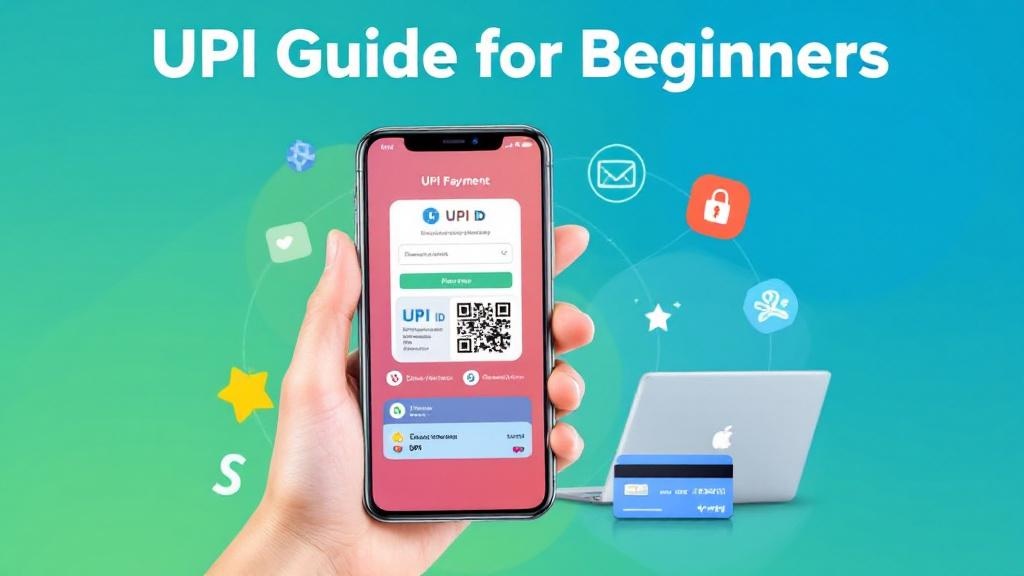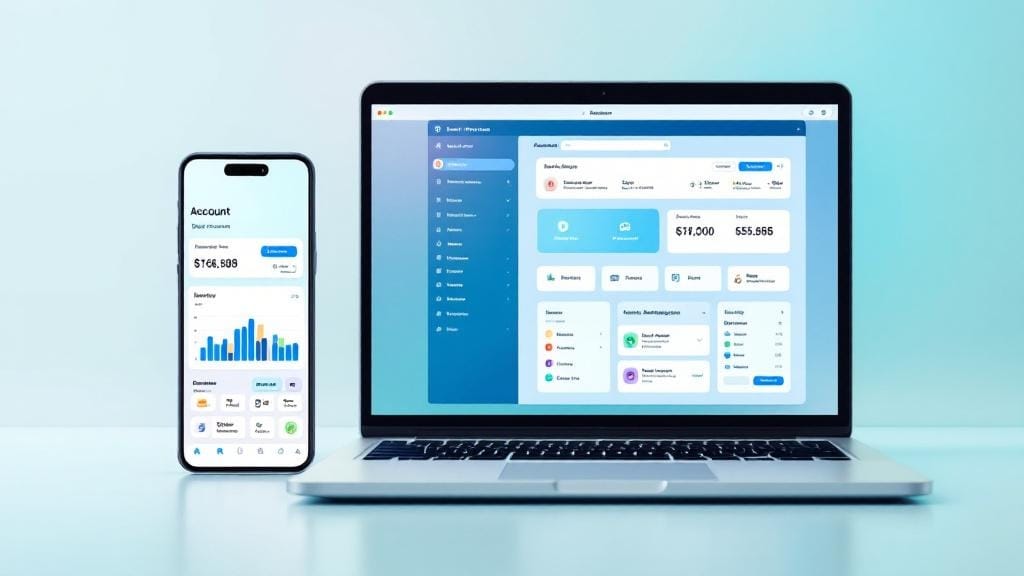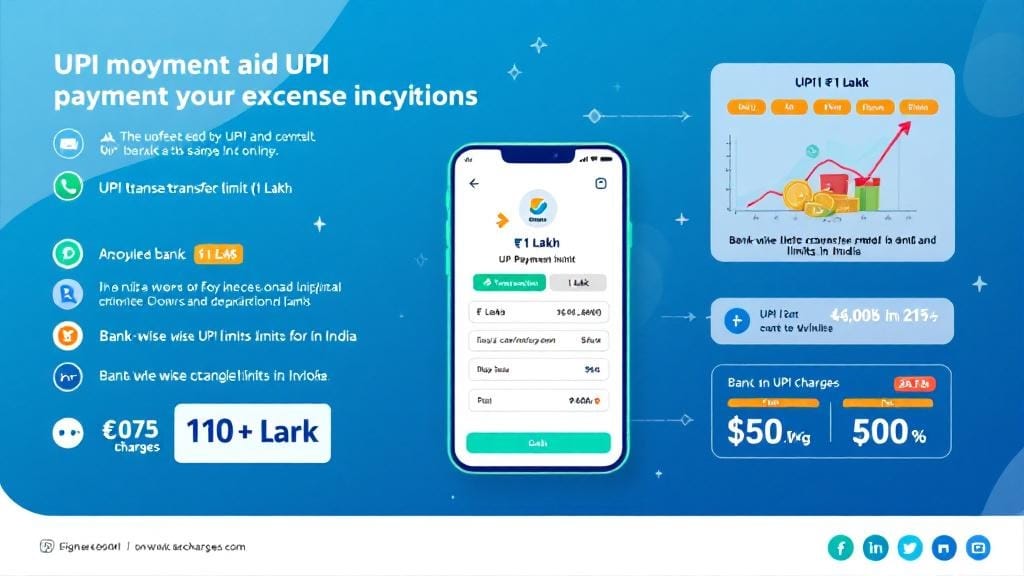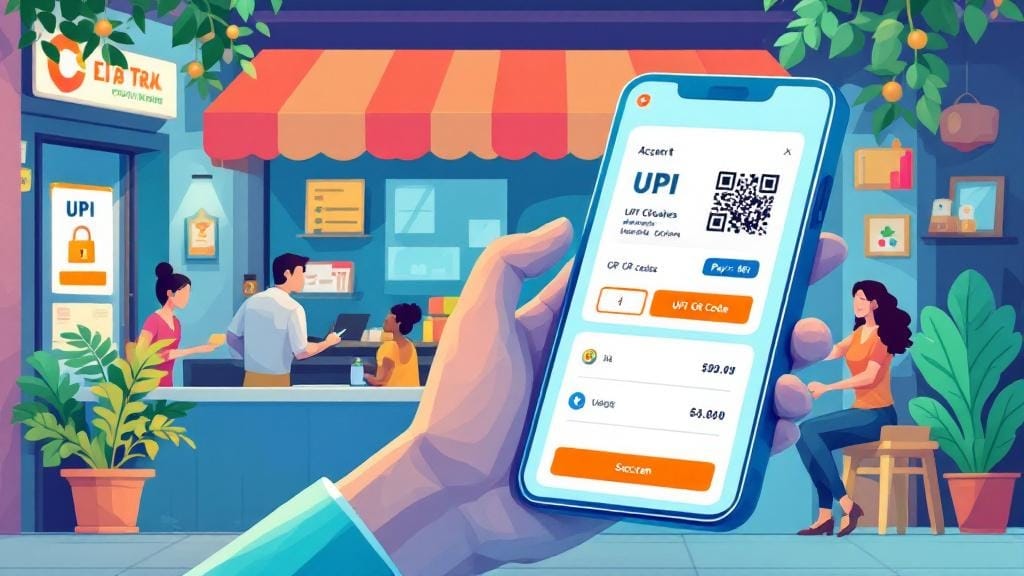The digital payment revolution in India has transformed the way people conduct financial transactions. One of the most significant innovations in this revolution is the Unified Payments Interface (UPI). If you’re new to UPI and want to understand how it works, how to set it up, and which apps to use, this guide is for you.
In this comprehensive UPI guide for beginners, we will cover everything you need to know—from Unified Payments Interface registration to how to use it securely for online money transfers. We’ll also dive into key comparisons with other payment methods like NEFT and IMPS, discuss Unified Payments Interface apps, and highlight the importance of keeping your Unified Payments Interface transaction secure.
What is UPI guide for beginners?
The Unified Payments Interface (UPI) is a digital payment system developed by the National Payments Corporation of India (NPCI). Unified Payments Interface allows users to send and receive money instantly using their smartphones. It enables seamless, real-time transactions between different bank accounts, making it easier for people to pay bills, transfer funds, or make purchases online.
Unlike traditional banking systems, Unified Payments Interface works 24/7, which means you can make payments anytime, anywhere. With just a mobile number linked to your bank account, Unified Payments Interface removes the need for complex banking details like IFSC codes and account numbers.
Key Features of UPI:
Instant Transfers: Transactions happen in real-time.
Interoperability: Unified Payments Interface works across different banks and payment apps.
Security: Unified Payments Interface uses two-factor authentication (2FA) to secure your transactions.
Low-Cost: Unified Payments Interface transactions are free or very low-cost, making it affordable for most users.
UPI Setup Step-by-Step
If you’re wondering how to use Unified Payments Interface for the first time, don’t worry. The UPI setup process is quick and easy. Follow these simple steps to start using UPI on your mobile:
Choose a UPI-enabled App: Start by downloading any of the Unified Payments Interface-supported apps, such as BHIM, PhonePe, Google Pay, Paytm, or Amazon Pay. All major Indian banks support Unified Payments Interface.
Link Your Bank Account: Open the app and choose your bank from the list. You will need to link your bank account by entering the required details.
Set a UPI PIN: A UPI PIN is essential for authorizing payments. Set up a 4 or 6-digit UPI PIN, which you’ll use for all transactions. This PIN is created using your debit card details.
Create Your UPI ID (Virtual Payment Address): When you set up Unified Payments Interface for the first time, you’ll be asked to create a unique UPI ID. This ID will be used to identify you during transactions, similar to an email address, and is usually in the format: [yourname@bankname].
Verify Your Details: The app will send you an OTP (One-Time Password) to verify your phone number and complete the registration process.
Start Using UPI: Once registered, you’re ready to make Unified Payments Interface payments and transfers!
Best UPI App for Beginners
If you’re a beginner, choosing the right Unified Payments Interface payment app is crucial for a smooth experience. Here are some popular Unified Payments Interface apps that are user-friendly and widely trusted:
1. Google Pay
Google Pay is one of the most popular Unified Payments Interface payment apps in India. It’s known for its simplicity and fast transactions. The app allows you to send money, pay bills, and shop online with just a few taps.
2. PhonePe
PhonePe is another well-known Unified Payments Interface app with an easy-to-use interface. It allows you to link multiple bank accounts and make payments directly through Unified Payments Interface. PhonePe also offers cashback deals, making it a great choice for saving money.
3. Paytm
Paytm is famous for its wallet services, but it also supports Unified Payments Interface for hassle-free payments. The app has a wide range of services, including bill payments, ticket bookings, and shopping.
4. BHIM
Developed by the Government of India, the BHIM app is designed to facilitate Unified Payments Interface transactions with simplicity. It’s perfect for users who prefer a no-frills, straightforward experience.
UPI Registration Process
The UPI registration process varies slightly depending on the bank or app you use, but the basic steps remain the same. Here’s a quick summary of the process:
Download a UPI-enabled app.
Select your bank from the list.
Verify your phone number with an OTP.
Create a UPI ID (e.g., [yourname@upi]).
Set a secure UPI PIN using your debit card.
Start making UPI payments.
How to Use UPI for the First Time
Now that you’re all set up, it’s time to start making transactions. Here’s a quick UPI payment tutorial for beginners:
To Send Money: Open your UPI app and choose the “Send Money” option. Enter the recipient’s UPI ID or scan their QR code to make a payment.
To Receive Money: Simply share your UPI ID with the sender or generate a QR code for them to scan.
Pay Bills: You can use UPI to pay utilities like electricity bills, mobile recharges, or even pay for shopping at your favorite stores.
Request Money: You can also request money by sharing your UPI ID with others, and they can pay you directly using the app.
UPI vs NEFT vs IMPS: Key Differences
While UPI, NEFT, and IMPS all enable money transfers, they differ in several ways. Here’s a quick comparison:
| Feature | UPI | NEFT | IMPS |
|---|---|---|---|
| Transfer Speed | Instant (24/7) | Batch-based (Hours) | Instant (24/7) |
| Fees | Free or low-cost | Free (Some banks charge) | Low fees |
| Limits | Varies by app/bank | No limit | Typically ₹2 lakhs |
| Availability | 24/7 | Only during bank working hours | 24/7 |
| Transfer Type | Peer-to-peer, merchant payments | Account to account transfer | Account to account transfer |
UPI Transfer Limits for New Users
For new users, UPI transfer limits might be lower. However, once your UPI account is verified and linked with your bank, the limits will increase. The general limits for UPI transactions are as follows:
Daily Transaction Limit: ₹1,00,000 (varies by bank)
Per-Transaction Limit: ₹1,00,000 (maximum for most apps)
Security Measures for UPI Transactions
UPI uses two-factor authentication (2FA) to ensure security. This means you need both your phone number and a unique UPI PIN to authorize each transaction.
Here are some security tips to keep your UPI account safe:
Never share your UPI PIN: Your UPI PIN should only be known to you.
Enable Two-Step Authentication: Many apps allow you to set up an extra layer of security.
Beware of phishing attacks: Always ensure you’re using official apps and websites.
Regularly update your app: Keep your UPI app updated to stay protected from security vulnerabilities.
UPI FAQs for Beginners
Here are some frequently asked questions about UPI to help you understand it better:
1. How do I create my UPI ID?
To create your UPI ID, you need to set up a UPI-enabled app and link it to your bank account. You’ll be asked to choose a unique ID during the registration process.
2. What is a Virtual Payment Address (VPA)?
A VPA is your unique identifier in the UPI system. It works like an email address (e.g., [yourname@bankname]) and allows you to receive payments securely.
3. Is UPI safe for online payments?
Yes, UPI is very safe due to two-factor authentication, encryption, and the use of secure servers by banks. However, always be cautious about phishing scams and share your PIN only with trusted sources.
4. How do I transfer money using UPI?
To send money via UPI, open your app, enter the recipient’s UPI ID, and authorize the transaction using your UPI PIN.
5. What are the UPI transfer limits for new users?
New UPI users generally have lower transaction limits, but these increase after account verification. Typically, the limit is ₹1,00,000 per day.
Conclusion
In this UPI guide for beginners, we’ve covered everything you need to know about setting up, using, and securing your UPI transactions. Whether you’re making your first payment, registering for the first time, or just exploring UPI’s features, you now have the knowledge to get started with ease.
UPI is revolutionizing digital payments in India, offering speed, convenience, and security like never before. Follow the steps, choose a reliable UPI app, and start exploring the world of digital payments in India today!
I hope this guide helps you understand UPI and get started with your digital payment journey.








Comments (0)